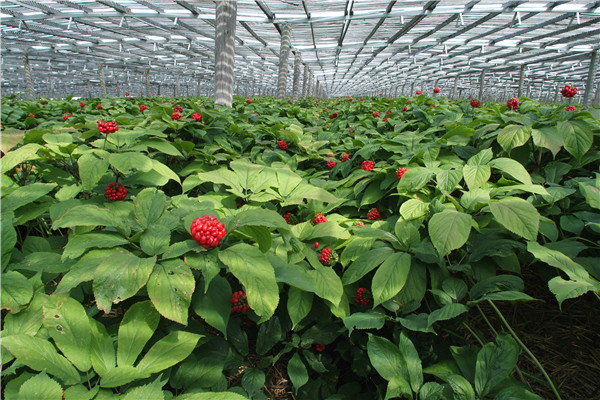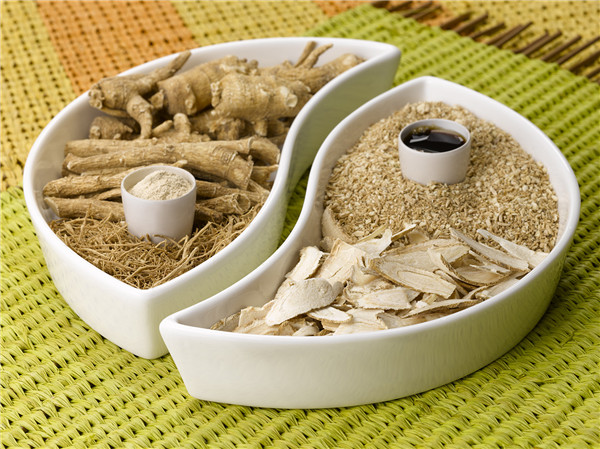Farm to table: Wisconsin to China
 |
|
Wisconsinites have sold wild ginseng to China for hundreds of years. Photos provided to China Daily |
Exports surge
Wisconsin sold $234 million of agriculture goods to China in 2016, almost double the amount of five years ago. China is the state's third-largest export destination behind Canada and Mexico in both total exports and agriculture exports.
Top agriculture commodities sold to China include wood, raw hides and skins and dairy products, according to the Wisconsin Department of Agriculture, Trade and Consumer Protection. But if one asks which product best represents the ties between Wisconsin and China, the answer would be ginseng.
Bob Kaldunski has been growing ginseng for 34 years, and his family has been doing it since the 1920s. "It's a valued crop. It's not just a commodity," he said. "You know someone cherishes it."
And that "someone" is often in China. The bittersweet ginseng herb, which the farmers call the "golden root", is treasured by Chinese for its potent medicinal properties, including improving brain function and reducing fatigue.
Every year, Chinese wholesalers travel to central Wisconsin to buy tons of newly harvested ginseng. The state accounts for 95 percent of the US' cultivated ginseng, and 80 percent of it is exported to China. The rest goes to other Asian countries, and to the Chinatowns in the US, where roots are bought as gifts by immigrants and travelers and then taken to China.
|
Cranberry processing facilities require large quantities of fresh water. |
The latest news
Kaldunski has not been to China, and neither have most of the state's other small-scale ginseng growers. He plants about 8.5 acres of ginseng. But the growers know the latest economic news about China and its growing middle class.
Asked how important China is to him, Kaldunski said,"Probably second to the weather."
Wisconsinites have been harvesting wild ginseng and selling it to China for hundreds of years.
But growing ginseng as a crop goes back to 1904 when four young boys from the Fromm family, whose grandparents were German immigrants, pioneered ginseng farming. The 8 to 13-year-old boys wanted to get money to raise silver foxes, so they experimented with planting ginseng. They figured out how to germinate seeds in layers of sand buried in boxes for a year, and harvested their first crop in 1912.
The state's rich soil and cold climate are ideal for ginseng farming, and the crop has become so popular that there were 1,400 growers in Marathon County in the late 1990s.
Since 2000, seeds have been sold globally, causing some in the county to stop growing the crop because the price declined.
In 2010, an unexpected heavy snowfall on Mother's Day, followed by a hard frost, devastated more growers, ruining 600,000 pounds of ginseng, valued at about $18 million. The loss rippled through the next four years. But in the last two years, the volume of harvested ginseng has been growing.
 |
|
Ginseng comes in many forms. |
Ginseng farmers
The current 170 Wisconsin ginseng farmers are working for "a bright future", said Kaldunski, who is also the vice-president of the Ginseng Board of Wisconsin.
The board is promoting the eagle seal of Wisconsin ginseng and the quality of the roots cultivated in the soil of central Wisconsin rather than those grown from Wisconsin seeds planted elsewhere.
Recently, the board hired a research firm to explore "the wants and needs'' of China's growing middle class. "Maybe they like a sweeter ginseng, not a bitter ginseng," said Kaldunski.
While some farmers stopped growing ginseng, others have expanded.
Kirk Baumann, his brother and his father started growing ginseng in 1978. When the price dropped in the 2000s, he decided to expand and purchase more seeds and land.
Today, Baumann Farms is the largest ginseng producer in the US, harvesting 200,000 pounds annually. The brothers built a new production facility in 2014, and a dorm next to it with 44 rooms for workers.
Last year, Baumman spent three months on six trips to China, looking for partners to start the family's own brand, Baumann Ginseng.
A contact is in the process of being made, and Baumman hopes to get their branded products on the shelves by September.
"Definitely before the Chinese New Year," he said.Another town in Central Wisconsin also is looking to host their Chinese guests, and if they arrive in September, they will be able to attend the 45th annual Cranberry Festival in Warrens, where a population of 360 swells to more than 100,000 for the event.
















